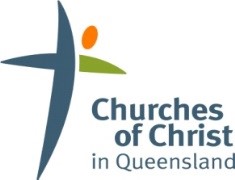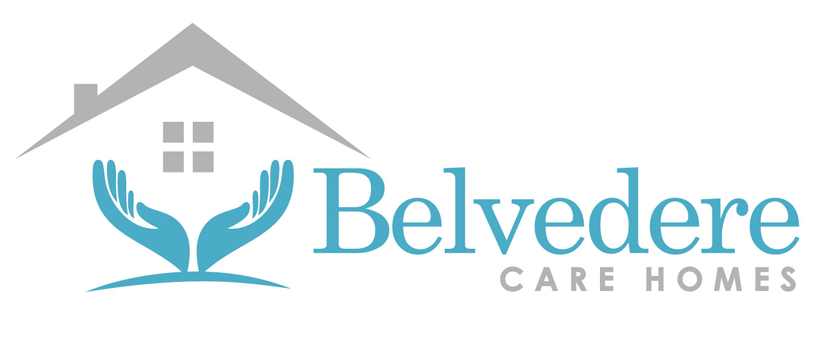Title Page
-
Conducted on
-
Prepared by
-
Location
1.0 Health & Safety Commitment
1.1 Health & Safety Policy
-
1.The workplace has a written health and safety policy and is signed and dated by the CEO?
-
2. The current H&S policy is displayed in a prominent place at the workplace?
-
3. Reference to the H&S Policy is included in employee inductions.
-
4. Staff are aware of the H&S Policy
-
5. Staff can explain the intent of the H&S Policy
1.2 Visitors & Contractors
-
1. The PCBU is aware of the Churches of Christ in Queensland Health & Safety contractor management policies and requirements?
-
2. Contractors are sourced using the organisation approved contractor database?
-
3. There is a contractor management procedure for all contractors to the workplace and documentation is kept.
-
4. Where required contractors provide evidence of current licences and insurances before commencing work e.g. work with children, asbestos removal, electrical work, construction work.These include Blue Card, National Police Check etc.
-
5. SWMS are obtained for contractors undertaking high risk work? (e.g. hot work, working at height, confined space, work involving asbestos containing material, noisy work, fire safety isolation, electrical isolation)
2.0 Health & Safety Planning
2.1 Health & Safety Site Inspections
-
1. The site has a Health and Safety Inspection Schedule in place – Site Safety Inspections are undertaken on a regular basis (usually quarterly) and there is evidence of this?
-
2. The Health and Safety Audit Inspection Schedule is monitored and reviewed by the Service Manager (e.g. control measures/recommendations are monitored and approved by the service manager)
3.0 Health & Safety Implementation
3.1 Consultation
-
1. The workplace has an appropriate means of consultation in place as identified in the "Health and Safety Consultation statement".
-
2. If the means of consultation is via a WHSR, the identity of the WHSR is displayed at the workplace in a way that is readily accessible to workers. (e.g. Workplace Health and Safety Team Poster)
-
3. Appropriate hours are allocated to enable HSR to fulfil the requirements of the role in accordance with current legislation.
3.2 Consultation – Health and Safety Meetings
-
1. The workplace holds WHS meetings on a regular basis?
-
2. Minutes of the WHS meetings are distributed to all attendees following the meeting.
-
3. Employees have appropriate opportunity to share health and safety information or to raise Health and Safety concerns at the workplace
-
4. Health and Safety is a standing agenda item at staff meetings
3.3 Communication & Training
-
1. Employees have completed all mandatory training
-
2. Employees receive regular health and safety information via SharePoint, emails, newsletter articles or notice boards.
-
3. Employees have appropriate opportunity to share health and safety information at toolbox meetings, commencement of duties and/or change of shift handover. Minutes of meetings are recorded and retained.
-
4. Relevant health and safety signage is displayed throughout the workplace
-
6. Employees and volunteers have completed necessary training
3.4 Incident Management, Investigation, and Corrective and Preventative Action
-
1. The workplace is able to demonstrate appropriate incident reporting procedures, with all incidents being reported and entered into the Aurion database within 24 hours
-
2. All areas of the incident report are completed and all workplace incidents are investigated. Corrective actions are identified and signed off by the Service Manager.
-
3. Serious injuries, serious illnesses and dangerous events (notifiable incidents) are reported immediately to the HSR team?
-
4. The workplace follows the identified procedures for incident investigation (Documentation including incident investigation reports and witness statements are available)?
-
5. Records are kept of all incident investigations (including control measures implemented) on site.
-
6. Where appropriate, results of investigations are communicated to all employees.
3.5 Hazard Management
-
1. Identified hazards are reported on a Hazard Report form and entered into GMA Web (including control measures/actions implemented)
-
2. Formal risk assessments are conducted using the hazard risk assessment process i.e. ‘Hierarchy of Control’ principle
-
3. Control measures are monitored, reviewed and documented
3.6 First Aid
-
1. First Aid Kits are readily accessible whenever workers are at work, and location well signed i.e. white cross and green background
-
2. Employees are aware of the location of first aid kits
-
3. First Aid Kits are appropriately stocked as per the checklist
-
4. Employees are aware of the procedure that exists for managing first aid incidents occurring at the workplace
-
5. A person with Provide First Aid qualifications or higher is available whenever workers are at work, or an alternative process is in place.
-
6. Names of appointed first aid personnel are prominently displayed at the workplace or registered nurse contact details are displayed.
-
7. First Aid kit contains a log book to record items used
4.0 Management of Specific Workplace Hazards
4.1 Hazardous Substances
-
1. Current Safety Data Sheets (less than 5 years old) are available for all high risk chemicals at the workplace, and are kept close to where the chemical is used. Note: These are still referred to as Material Safety Data Sheets in Victoria
-
2. The workplace has a current and up to date hazardous chemical and dangerous goods register
-
3. Risk assessments are conducted for all high risk chemicals used at the workplace and records kept at the workplace.
-
4. All hazardous chemicals containers (including spray bottles) are labelled as required by legislation.
-
5. Decanting of chemicals is kept to a minimum
-
6. Staff using hazardous chemicals are trained in the safe use of the chemicals and training records are kept as required by legislation.
-
7. Appropriate Personal Protective Equipment is provided to staff where applicable.
-
8. Relevant spill containment and clean up equipment is available.
-
9. Precautions are taken to prevent unauthorised access to hazardous chemicals. E.g. Lockable cabinets are locked and clearly identified
-
10. All gas cylinders and Medical oxygen cylinders are chained / secured.
-
11. Hazardous and infectious waste is disposed of appropriately and safely
-
12. Appropriate HAZCHEM signage is in place where required by dangerous goods legislation.
4.2 Asbestos
-
1. A current asbestos register is available onsite.
-
2. Signs displayed in prominent areas inform contractors to review the register.
-
3. Labels/signs indicate the location of asbestos.
-
4. All Asbestos Containing Material is observed to be in good condition and a schedule in place for regular review.
4.3 Ergonomics and Manual Tasks
-
1. The workplace has policies and procedures for manual handling.
-
2. Manual task risk assessments have been performed and records of risk assessments are kept.
-
3. All risks associated with manual tasks are controlled.
-
4. Storage is organised so that frequently used heavier items are stored between mid-thigh and shoulder height.
-
5. Tasks rotation is undertaken during shift periods.
-
6. Work heights are appropriate for the tasks performed and workers are not in static postures for long duration without variation.
-
7. Adequate space is available to perform tasks.
-
8. Keyboard workstations are well positioned and chairs adjustable.
-
9. Office chairs are fully adjustable and in good working order
-
10. Mechanical lifting aids and trolleys have been provided where required and are appropriate for the task
-
11. Manual handling training is provided to all employees on commencement of employment and training records are kept and maintained.
-
12. On-going training is provided to all employees annually and as required to perform manual tasks, and training records are kept and maintained.
-
14. Appropriate signage and information is displayed.
-
15. Ergonomic factors are considered prior to the procurement of plant, tools, containers, workbenches, furniture, mechanical devices and vehicles.
4.4 Plant & Equipment
-
1. Adequate guarding is installed where required on plant and equipment.
-
2. Risk assessments have been conducted on the use of hazardous plant and equipment, and risk assessment records maintained.
-
3. Employees are appropriately trained in the operation of plant and equipment and training records are maintained.
-
4. A system exists for reporting damaged or non-operational plant and equipment.
-
5. Plant and equipment is appropriately maintained in accordance with manufacturer’s instructions and records kept.
-
6. Employees required to wear PPE receive training and training records are maintained.
-
7. The wearing of PPE where required is enforced.
-
8. All registrable plant is registered, with the certificate on display within the facility
4.5 Housekeeping- Indoor Environment
-
1. The workplace is maintained in a clean and tidy condition.
-
2. The workplace has adequate lighting.
-
3. Floors surfaces, pathways and access ways are free from potential trip and slip hazards.
-
4. Adequate bins are provided in suitable locations, and a process in place to ensure they are regularly emptied
-
5. Benches are clear of rubbish and equipment is put away when not in use
-
6. Work areas/ desks are free from sharp protruding edges
-
7. Kitchen and work areas are in clean and hygienic condition
-
8. All Kitchen staff have completed required kitchen competencies and are filed in the Health & Safety Folder
-
9. The site can produce pest control records
-
10. Equipment is provided to reduce glare e.g. blinds.
-
11. Adequate ventilation is provided.
-
12. Air-conditioning is serviced as per manufacturers recommendation and records kept.
-
13. Fresh drinking water is available in close proximity
-
14. Suitable dining facilities are available
4.6 Housekeeping- Outdoor Environment
-
1. Outside areas checked regularly for hazards and other dangerous objects.
-
2. Building materials, maintenance equipment is secured
-
3. Entry and exits gates identified clearly, and signed accordingly
-
4. Pathway surfaces and egress paths are free from potential trip and slip hazards
-
5. Trip hazards are assessed and appropriate controls put in place.
-
6. Tree branches are removed and/or pruned to a safe height.
-
7. Excess foliage removed from pathway areas
-
8. Outdoor furniture is checked regularly and maintained in good condition.
-
9. Car parks and external areas have even surfaces, are free from obstructions and have non-slip surfaces.
-
10. Identified “Disabled parking” areas with clear access to gates and ramps are provided.
-
11. Speed Signs are in place and can be clearly viewed
-
12. Resident smoking areas are an adequate distance from building entrances/ventilation sources, and safe butt disposal processes are in place and a "designated Resident Smoking Area" sign is in place?
4.7 Bus safety (if relevant)
-
1. All bus drivers have completed the medical requirements of the driver authorisation (F3712 & F3195)?
-
2. Buses have an appropriately stocked, in-date First Aid Kit?
-
3. Buses have a Fire extinguisher which is inspected and tagged as per regulations?
-
4. The bus (and hoist, if relevant) is serviced and maintained as required?
-
5. The bus safety folder is up-to-date? (all checklists are competed as required)
-
6. All staff and volunteers have completed the wheelchair restraint competency and is records filed in the Green bus folder located in the Service Managers office
-
7. Do all bus drivers have a Drivers Diary (Log Book)
-
Requirements for drivers of buses with 12 or more seats
-
• A National Driver Work Diary must now be kept for all drivers who drive over 100km from their home base.
-
• This also includes buses that weigh 4.5 tons or more with a passenger capacity of 12, including the driver
-
• Work diaries can be purchased from any Qld Transport Customer Service Centre at a cost of $25.00, and each driver must obtain their own diary in person.
-
The bus is registered (check with Fleet); has currently six-monthly COI's (certificate of inspections) and wheelchair loaders are inspected every six-monthly (by AVA).
5.0 Emergency Management
5.1 Emergency Planning
-
1. Fire and Evacuation Plan (FEP), that is current, up to date and in the correct organisation template is in place
-
2. FEP is reviewed annually or when staff changes occur and updated accordingly
-
3. Employees have received training in the company’s emergency procedures. (Practical and Forms 1-11)
-
4. Employees receive fire and evacuation training within one month of commencing employment and every 12 months thereafter.
-
5. Fire drills are conducted annually as required by legislation and records maintained on site.
-
6. Training records are maintained on site as per legislation.
-
7. An alarm system is in place for emergencies related to fire.
-
8. The workplace has designated and signed/clearly communicated assembly point(s).
-
9. Fire safety installations and emergency lighting is tested regularly and records are maintained on site.
-
10. Fire fighting equipment is easily accessible and unobstructed, and has a 1 m clear area surrounding the appliance.
-
11. Fire fighting equipment has appropriate signage indicating its location and type.
-
12. Fire fighting equipment is inspected and tagged in accordance with regulations.
-
13. Fire evacuation diagrams are displayed throughout the workplace on egress (exit) paths.
-
14. Fire evacuation diagrams are securely attached to the walls, correctly orientated and display correct information.
-
15. All emergency exits (including alternative exits) are kept clear of obstructions and have appropriate signage.
-
16. The workplace has designated fire wardens.
-
17. Critical defects have been rectified within the required timeframe.
-
19. Records and documentation are stored within a fire resistant cabinet and electronically.
-
20. Is the door hardware the correct type?
5.2 Disaster Planning
-
1. A Disaster Management Plan (DMP) exists and outlines preparation for: Severe storms, Bushfires, Flooding and Other emergencies
-
2. DMP is reviewed annually or when staff changes occur and updated accordingly
-
3. Employees are aware of the Disaster Management Plan.
-
4. Critical roles are defined and appropriate staff appointed.
-
5. Critical information is current and displayed at the workplace.
6.0 Safety & Security
6.1 Safety Procedures
-
1. Risk assessments have been conducted in relation to safety and security at the workplace.
-
2. Employees are aware of what to do in the event of an incident.
-
3. Distress buttons / duress alarms are installed in high-risk areas.
-
4. Employees’ personal belongings are stored out of public view at all times.
-
5. Staff are wearing enclosed and appropriate footwear
-
6. Staff car parking and external areas have adequate lighting.
-
7. Secure cash handling procedures are in place.
-
8. The workplace has critical incident de-briefing procedures for employees.
7.0 Fire Safety
-
1. Are the doors along the evacuation route unlocked and unobstructed?
-
2. The owner/occupier must ensure doors on evacuation routes are not locked if people are known to be in the building.
2. Doors on evacuation routes must be able to be opened by a single handed downward or pushing action on a single device. Knob type handles are not acceptable door hardware for these doors. 6 - Public - QFES Advisory Notes (Effective: 11-2013)
3. The door hardware of buildings used as detention centres, mental health facilities, child care centres (including Prep and After-School Care where full-time adults are present) and secure parts of banks, are required to comply with the Building Code of Australia, Part D2.21.
4. Where special door locking arrangements are in place the method of operation and the information provided to staff/occupants is required to be retained in the evacuation coordination procedures, which must be kept with the fire and evacuation plan. (For more information regarding fire and evacuation plans refer to item 44).
This item relates to Sections 10, 11 and 12 of the Building Fire Safety Regulation 2008 -
3. Are fire/smoke walls free from unprotected penetration?
-
4. The owner/occupier must ensure that fire/smoke walls are free from unprotected penetration.
• If, for example, tradespersons or other persons have to penetrate fire or smoke walls to fit equipment, air conditioning ducts etc. or run cabling, the person as well as the occupier must ensure these penetrations are filled with the appropriate fire rated compound, or in the case of smoke walls, sealed.
2. Building plans should indicate whether walls are fire or smoke walls.
This item relates to Section 13 of the Building Fire Safety Regulation 2008. -
5. Are the evacuation signs/diagrams securely fastened and orientated for the building?
-
6. Have steps been taken to ensure the building is not overcrowded?
-
7. Is the number of unwanted alarms activations below the prescribed average? (Does not exceed 4)
-
8. Is the Evacuation System in ‘auto’ mode with no zones isolated or in fault?
-
9. Can current maintenance records for Evacuation System be produced upon request?
-
10. Do all designated green emergency exit paths on the evacuation diagram lead to an assembly area?
-
11. Can current maintenance records for all portable fire fighting equipment be produced?
-
12. Can current maintenance records for Standby Power be produced upon request?
-
13. Has an operational test of the Fire Service Controls been conducted?
-
14. If a Critical Defect Notice has been received, has action been taken to rectify within one month?
-
15. If a Critical Defect Notice has been received, have interim measures been put in place?
-
16. Do fire and evacuation plans reflect alternative solutions?
-
17. Is there a procedure in place to evacuate persons with special needs?
-
18. Are all fire and evacuation plans available upon request?
-
20. Is there a procedure in place to provide ‘adequate instruction’ to prescribed persons (Fire Walk)?
-
19. Has a Fire Safety Adviser been appointed?
-
21. Is the ‘Certificate of Classification’ for the building displayed?
-
22. Are records kept on site?
8. Electrical Equipment
-
1. Are all electrical leads in good condition e.g. showing no signs of damage?
-
2. All hostile electrical equipment is tested and tagged bi-annually?
-
3. All General Power Outlets in residents rooms are RCD protected
-
4. All extension leads and corded power tools are stored correctly?
-
5. Safety switch’s and residual current devices tested as required by state legislation?
-
6. Double adaptors and piggy back plugs are not being used?
-
7. Faulty equipment is removed from service and appropriately tagged “Out of Service”
Consultation
-
The Health & Safety Team would like to thank the following staff members for their assistance whilst on site:












